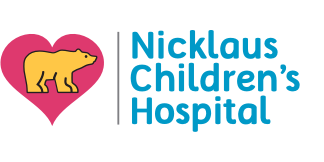- Parents Home
- Para Padres
- Allergy Center
- Asthma Center
- Cancer Center
- Diabetes Center
- Diseases & Conditions
- Doctors & Hospitals
- Emotions & Behavior
- First Aid & Safety
- Flu Center
- Food Allergy Center
- General Health
- Growth & Development
- Heart Health
- Homework Help Center
- Infections
- Newborn Center
- Nutrition & Fitness Center
- Play & Learn Center
- Pregnancy Center
- Q&A
- Recipes
- School & Family Life
- Sports Medicine Center
- Videos
- Kids Home
- Para Niños
- Asthma Center
- Cancer Center
- Diabetes Center
- Feelings
- Getting Help
- Health Problems
- Health Problems of Grown-Ups
- Heart Center
- Homework Center
- How the Body Works
- Illnesses & Injuries
- Kids' Medical Dictionary
- Movies & More
- Nutrition & Fitness Center
- Puberty & Growing Up
- Q&A
- Recipes & Cooking
- Relax & Unwind Center
- Stay Safe Center
- Staying Healthy
- Staying Safe
- Videos
- Teens Home
- Para Adolescentes
- Asthma Center
- Be Your Best Self Center
- Cancer Center
- Diabetes Center
- Diseases & Conditions
- Drugs & Alcohol
- Expert Answers (Q&A)
- Flu Center
- Homework Help Center
- Infections
- Managing Your Medical Care
- Managing Your Weight
- Nutrition & Fitness Center
- Recipes
- Safety & First Aid
- School & Work
- Sports Center
- Stress & Coping Center
- Videos
- Your Body
- Your Mind
A to Z: Chalazion
May also be called: Meibomian Gland Lipogranuloma
A chalazion (kuh-LAY-zee-on) is a lump on the inner side of the eyelid. It occurs when one of the small oil glands (meibomian glands) around the eyelid becomes blocked.

More to Know
Located near the eyelashes, the Meibomian glands are responsible for keeping the eye moist. When one of these glands can't drain properly, a chalazion develops.
A person with a chalazion may have a tender, painful, or swollen eyelid, increased tearing, and sensitivity to light. Astigmatism (an eye problem that causes blurred vision) can be a complication of a large chalazion because of the pressure it puts on the cornea.
The condition is usually treated at home with warm compresses and gentle massage that can help drain the blocked gland. If the chalazion continues to grow, however, it may need to be surgically removed. Steroid injections also can help ease symptoms.
Keep in Mind
Having a chalazion is not a serious health problem. Left alone, the affected area usually heals completely within a month. If after this time the lump continues to grow or there is eyelash loss, talk to your doctor about further treatment.
All A to Z dictionary entries are regularly reviewed by KidsHealth medical experts.

© 1995- The Nemours Foundation. KidsHealth® is a registered trademark of The Nemours Foundation. All rights reserved.
Images sourced by The Nemours Foundation and Getty Images.

